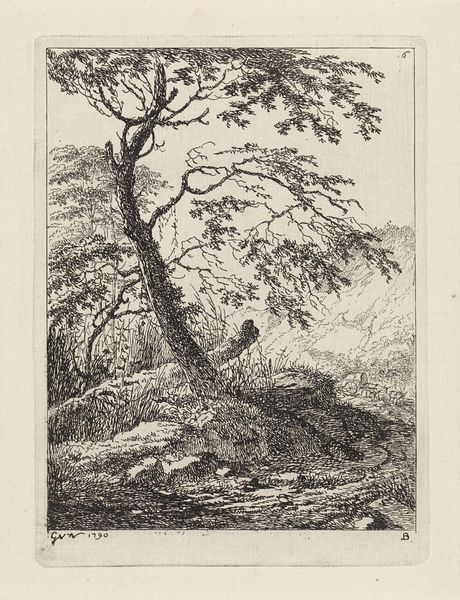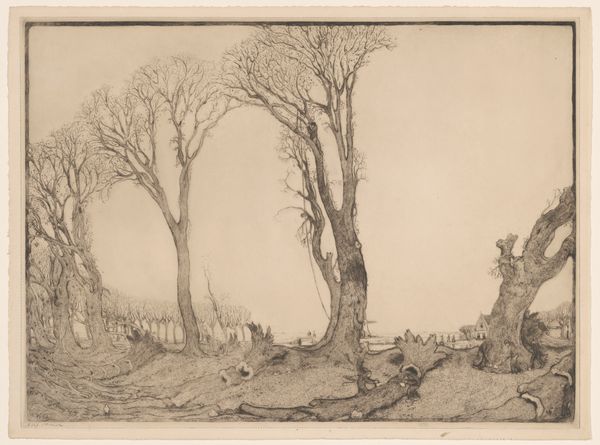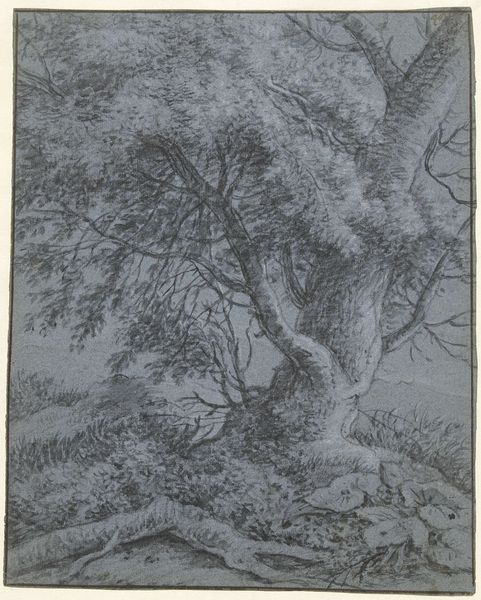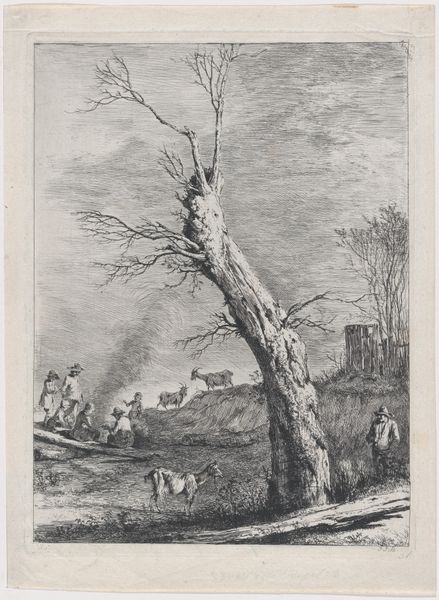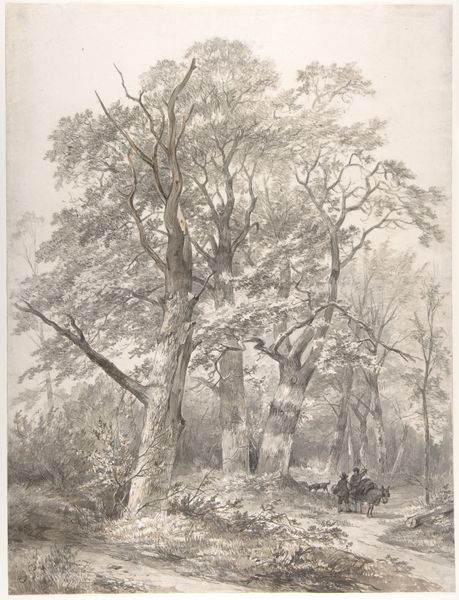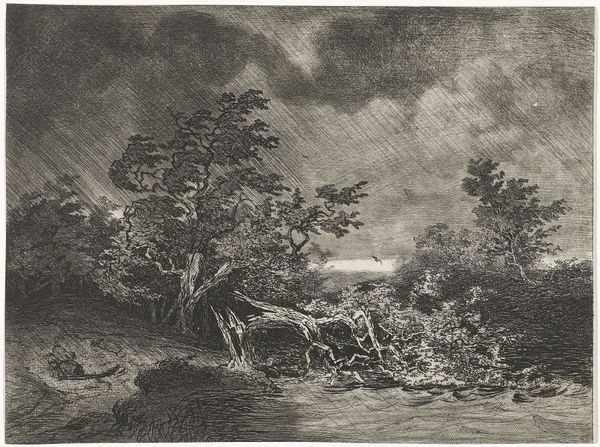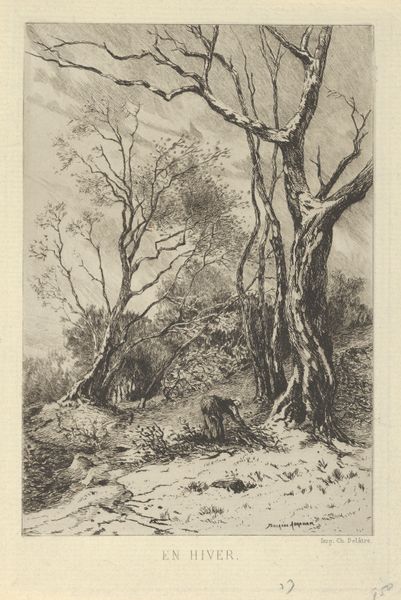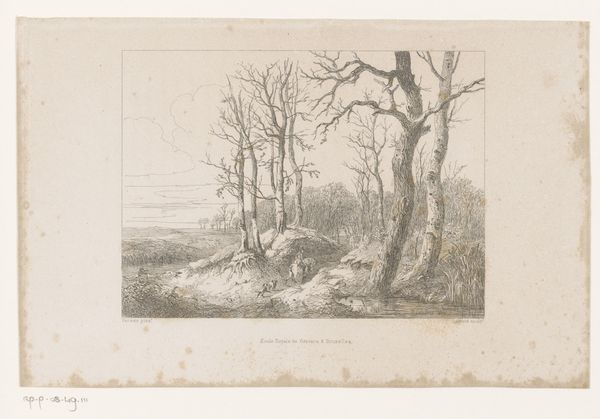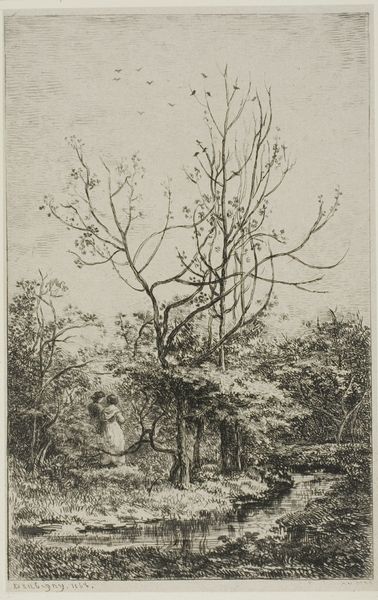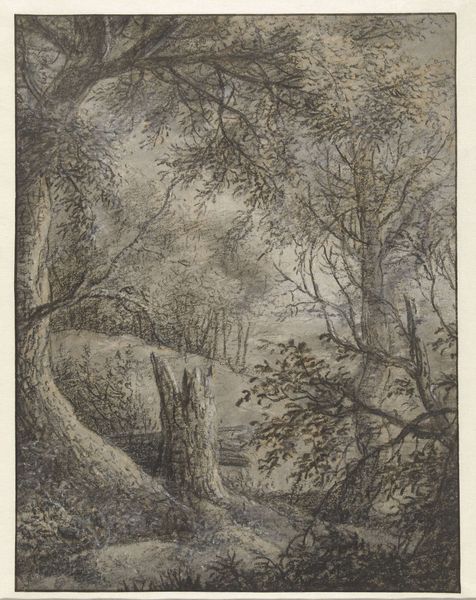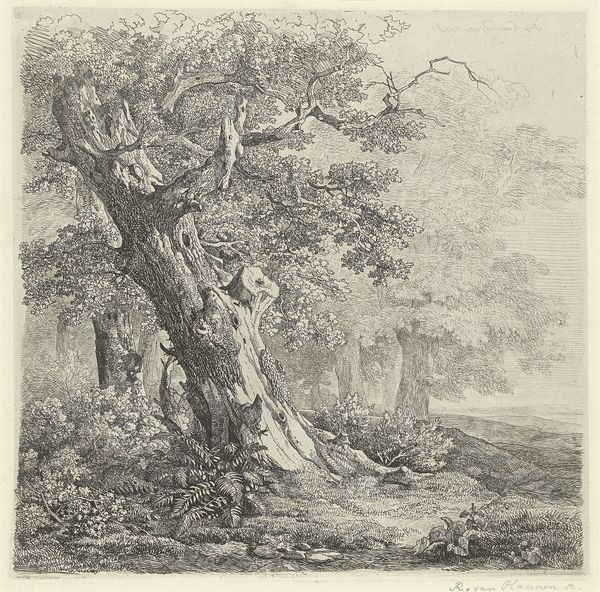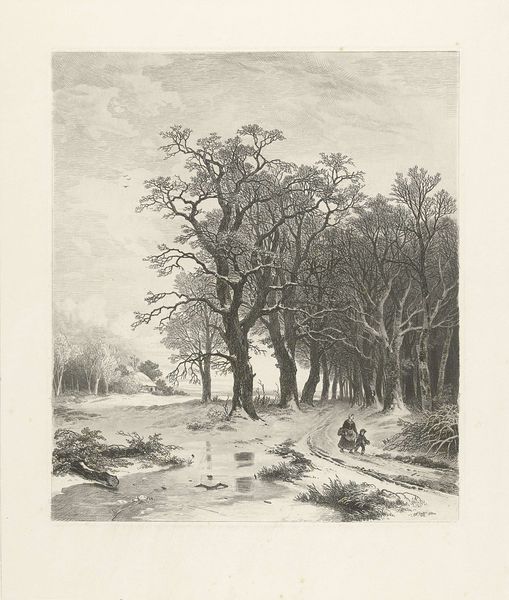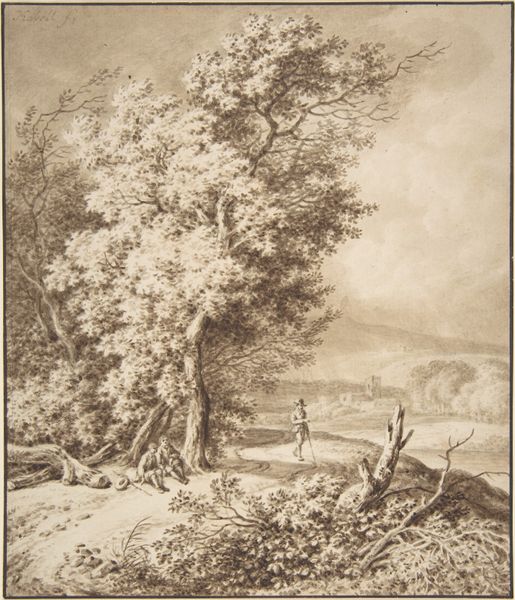
drawing, ink
#
drawing
#
landscape
#
ink
#
romanticism
Dimensions: height 253 mm, width 226 mm
Copyright: Rijks Museum: Open Domain
Editor: We are looking at Jacob van Strij’s, "Winter Landscape with pollard willows along a frozen ditch," an ink drawing dating back to sometime between 1766 and 1815. The skeletal trees and grey tones evoke a sense of stark isolation. How do you interpret the political or social commentary present in this seemingly simple landscape? Curator: It’s tempting to see this as a straightforward landscape, but let’s delve deeper. Van Strij painted this during a period of immense political upheaval in the Netherlands, a time when traditional power structures were collapsing under the weight of Enlightenment ideals and revolution. The pollard willows are very interesting—these aren't just trees. They've been deliberately shaped and managed. They speak to human intervention on the land. Does that start you thinking about control? Power? Editor: I hadn’t thought about it that way, but now that you mention it, the manipulated trees could represent the reshaping of society at the time. A rigid structure imposed onto nature. Curator: Exactly! And the "frozen ditch"? Water, which should flow freely, is trapped, immobilized. It evokes the stagnation that many felt under the old regimes. Moreover, landscape art itself was a form of nationalistic expression, claiming and celebrating the land amidst political uncertainty. The choice to depict winter, a season of dormancy, adds another layer. Is it despair, or is it the quiet promise of renewal after a period of repression? Editor: That’s a complex reading of the work. I see so much more than I initially did. I hadn't considered the sociopolitical undertones embedded within. Curator: Precisely! These landscapes can offer silent commentary on periods of radical social change. Art offers subtle but impactful narratives. I think this enriches the piece greatly.
Comments
No comments
Be the first to comment and join the conversation on the ultimate creative platform.
